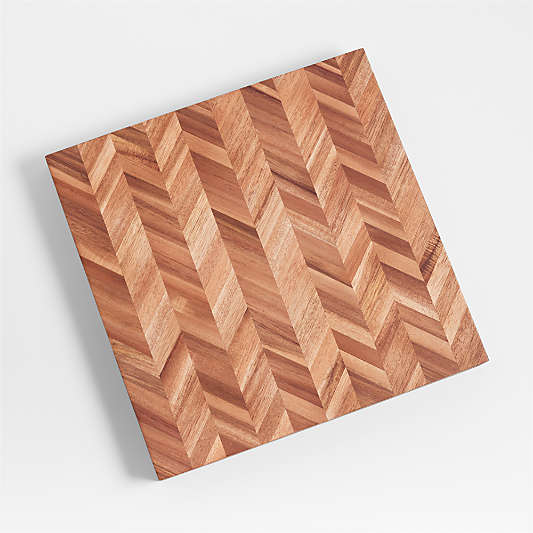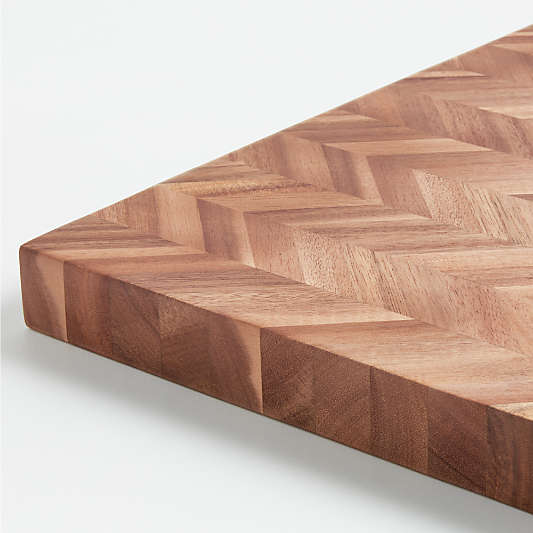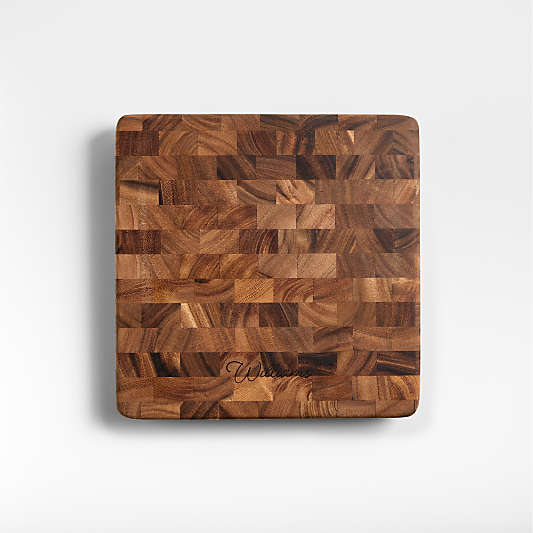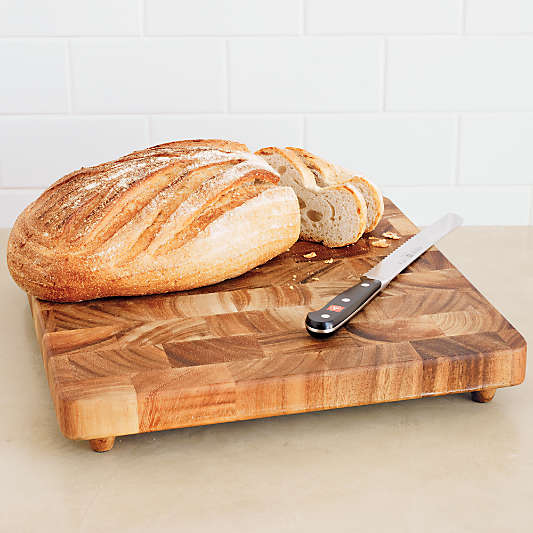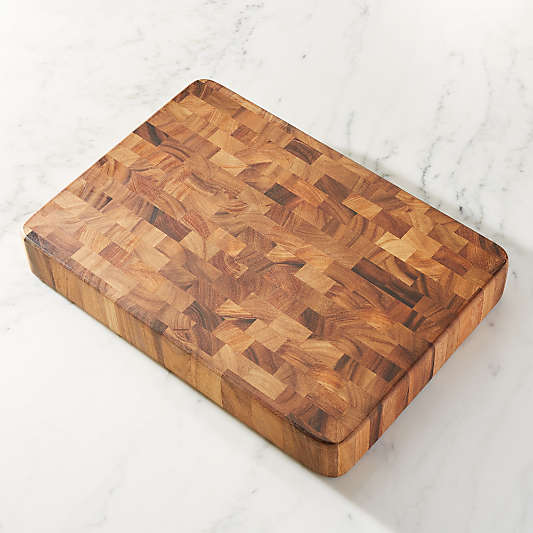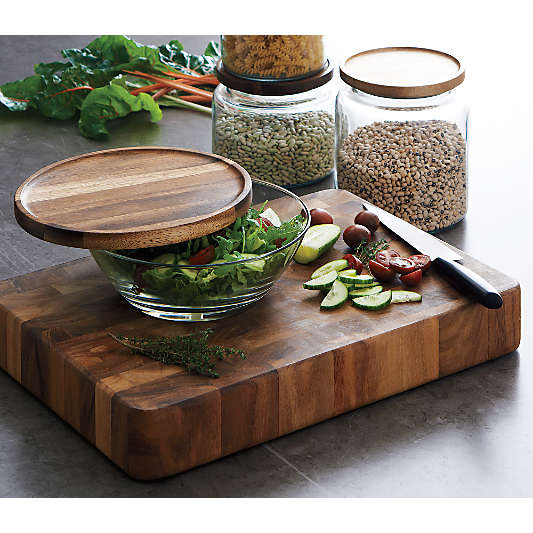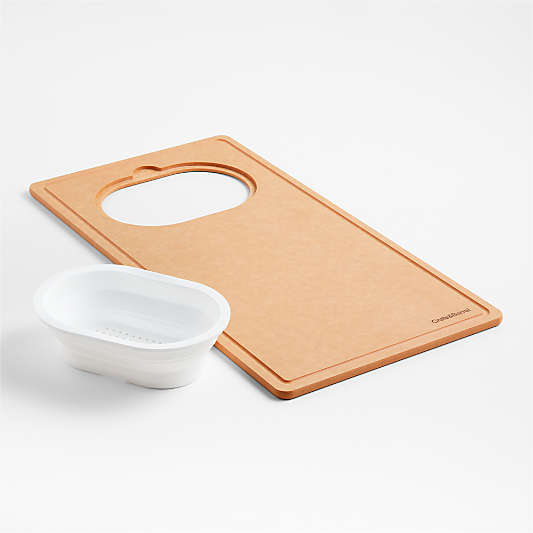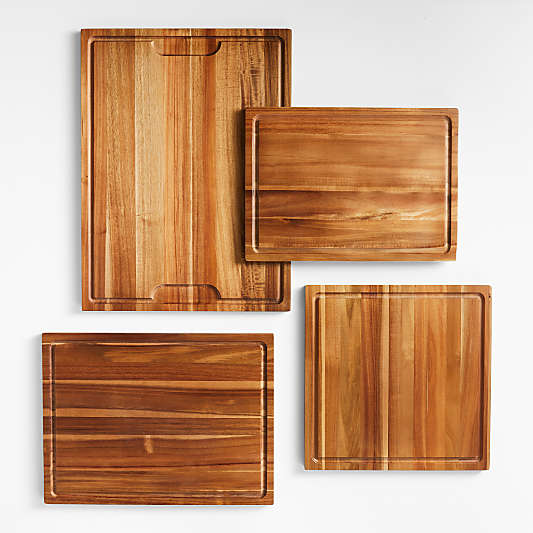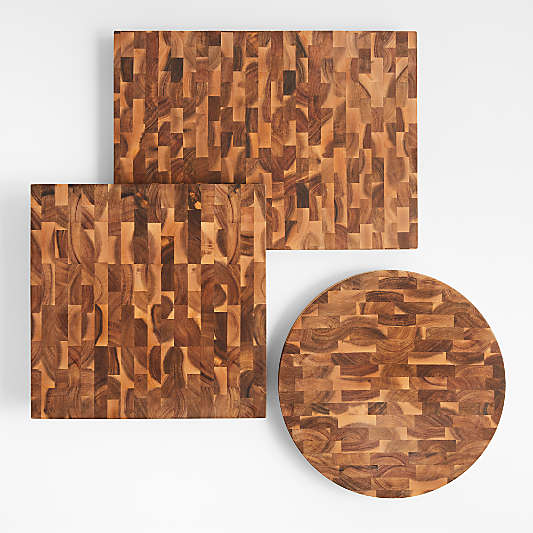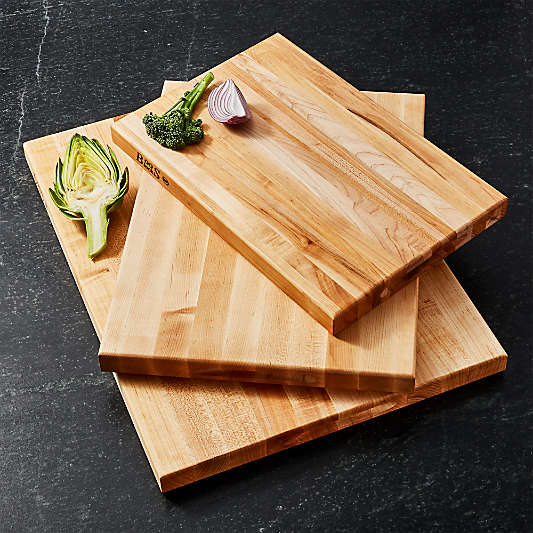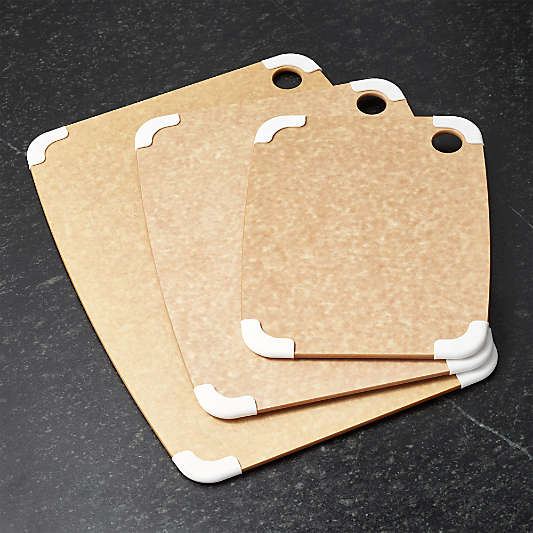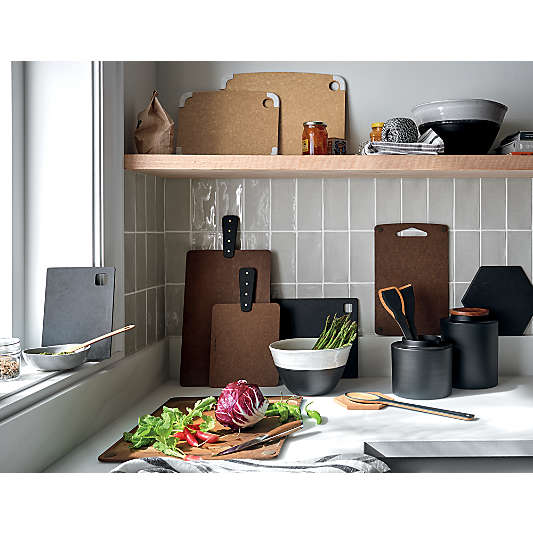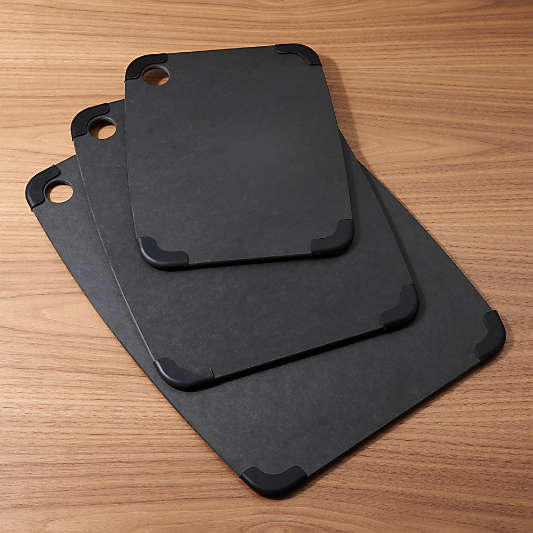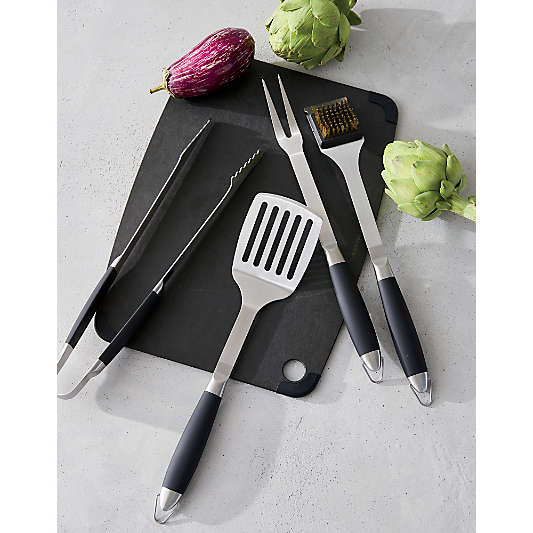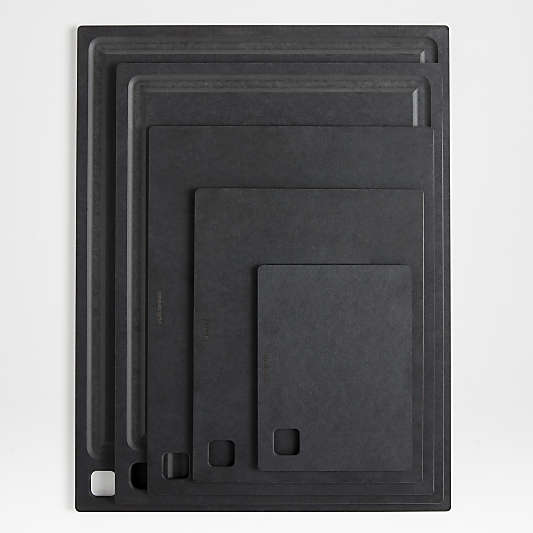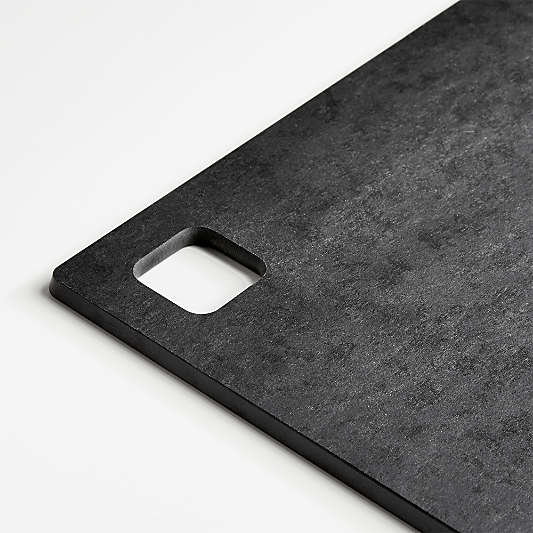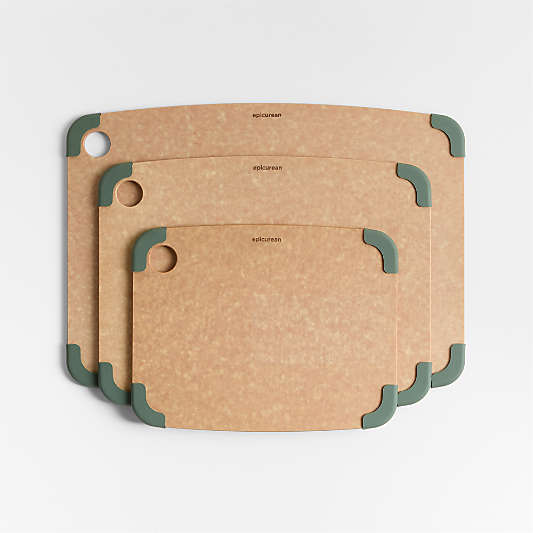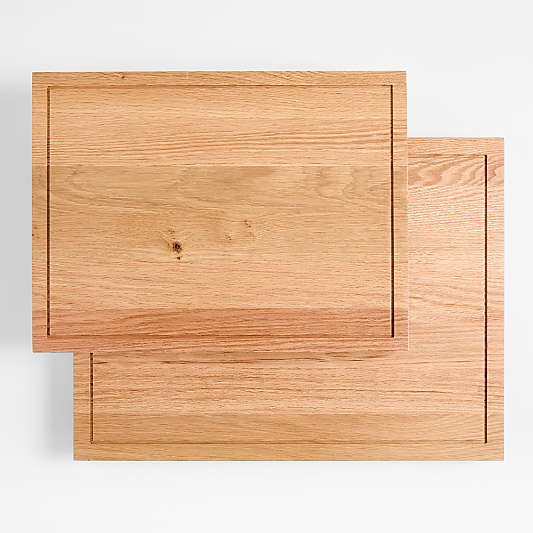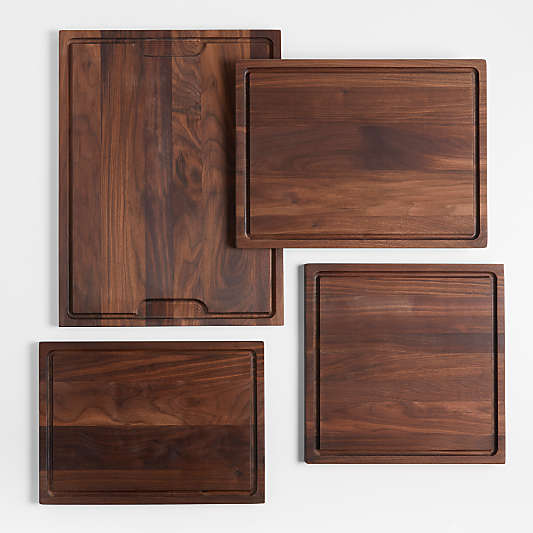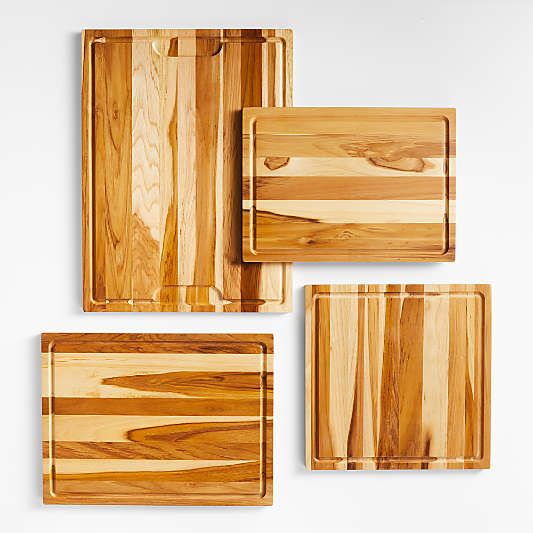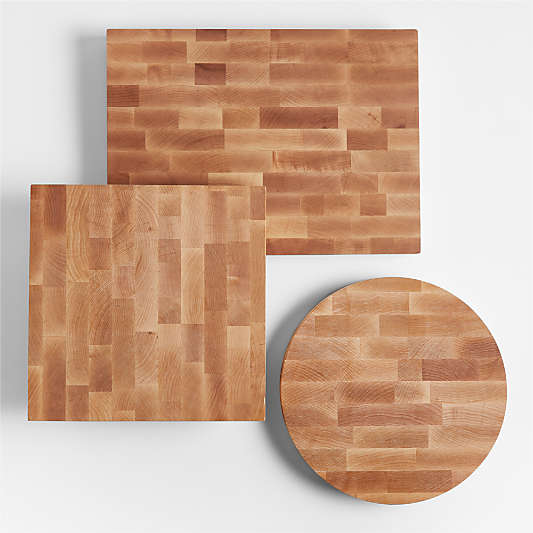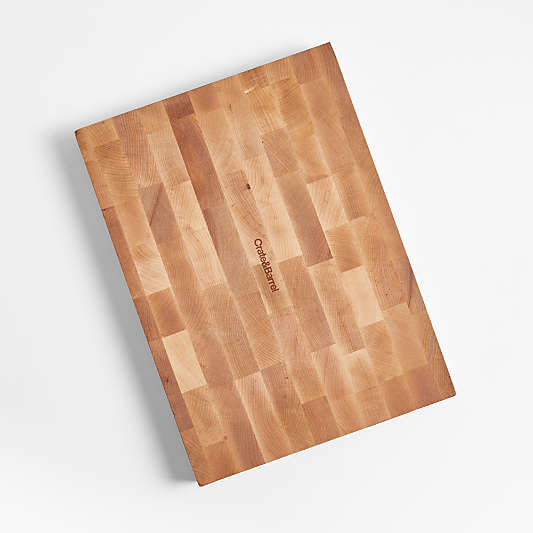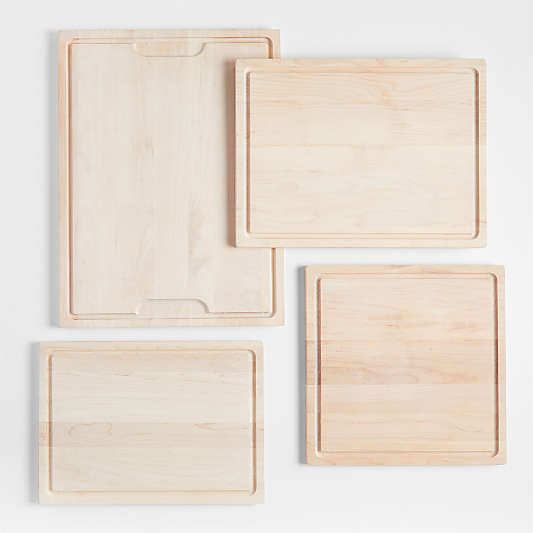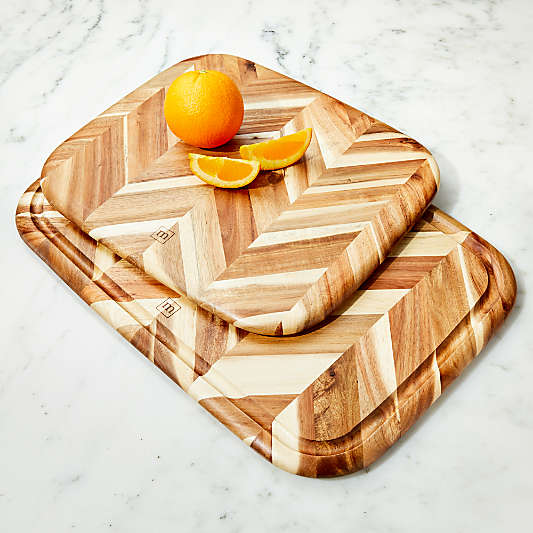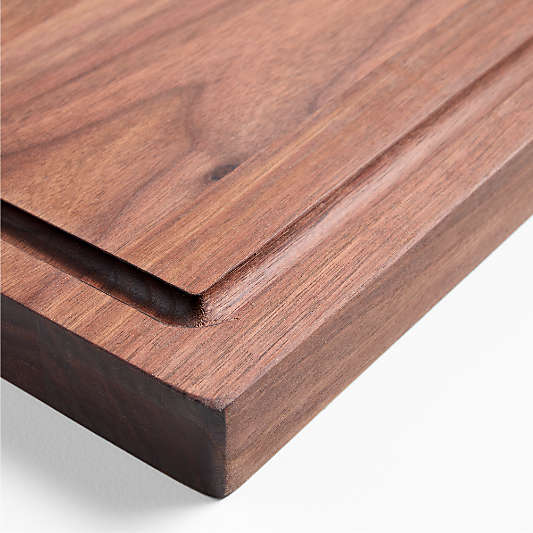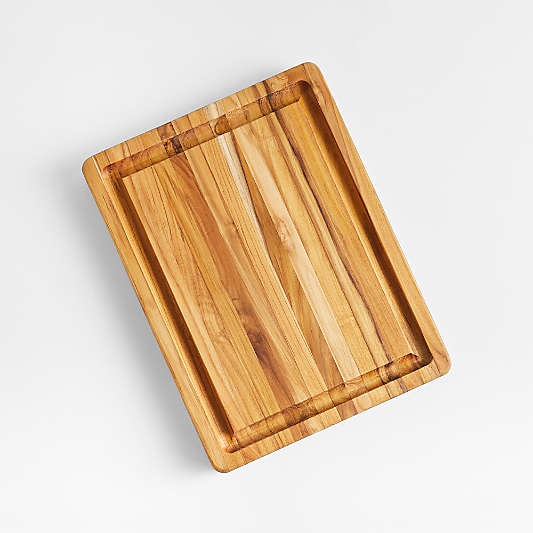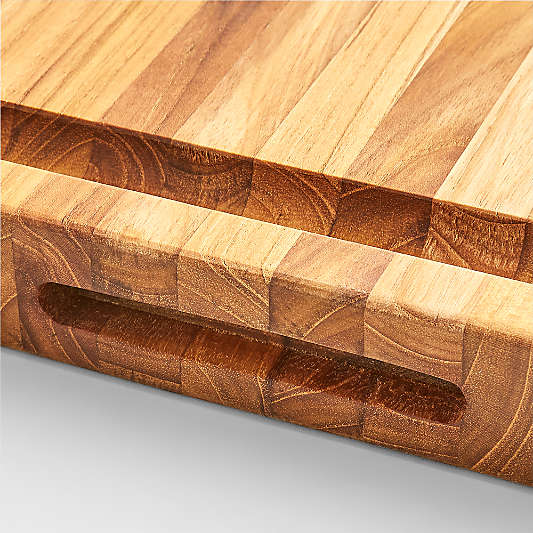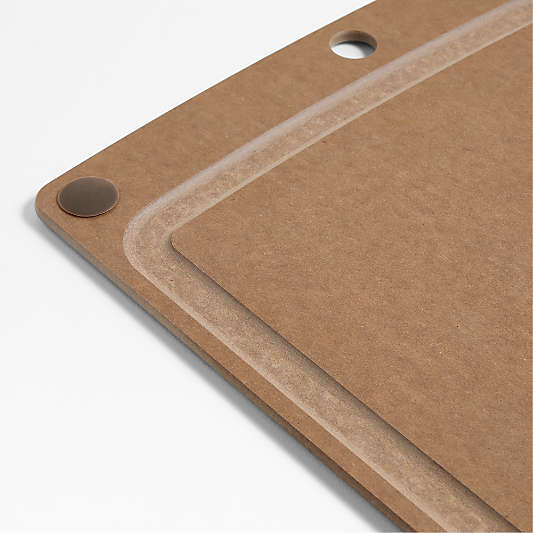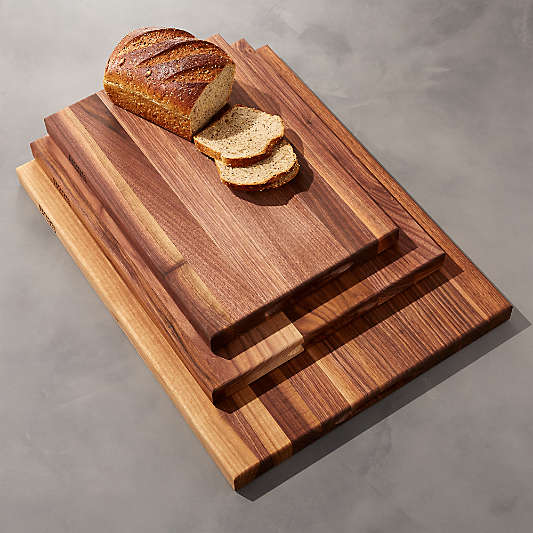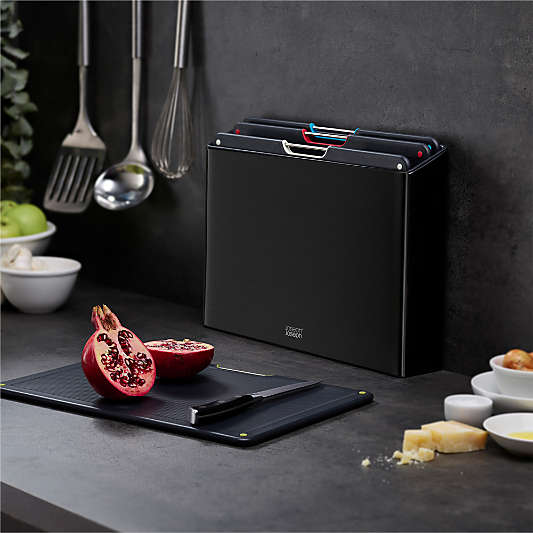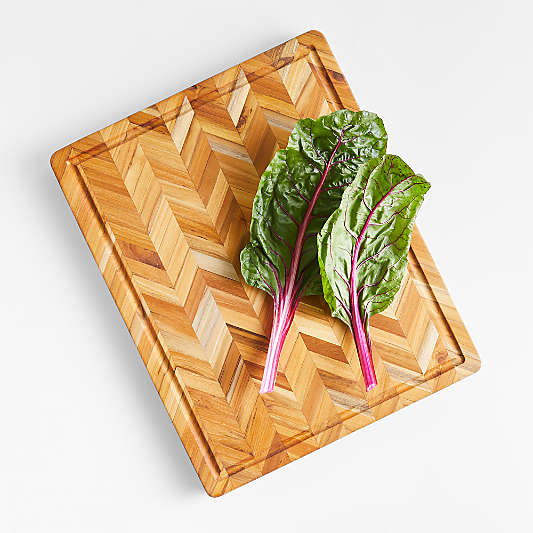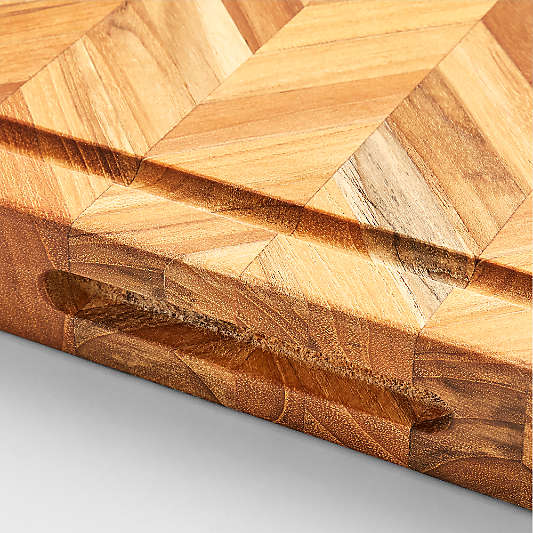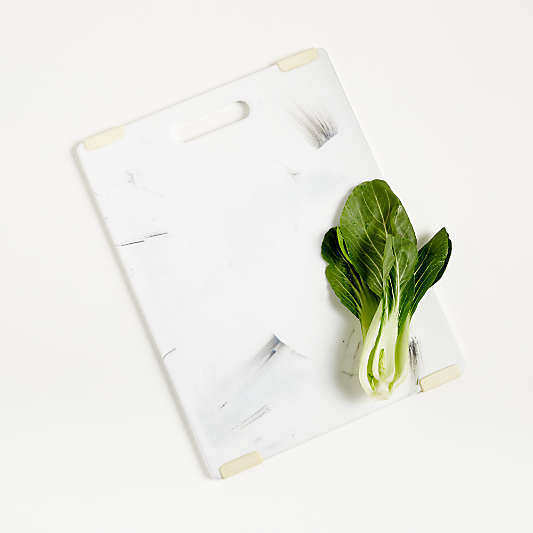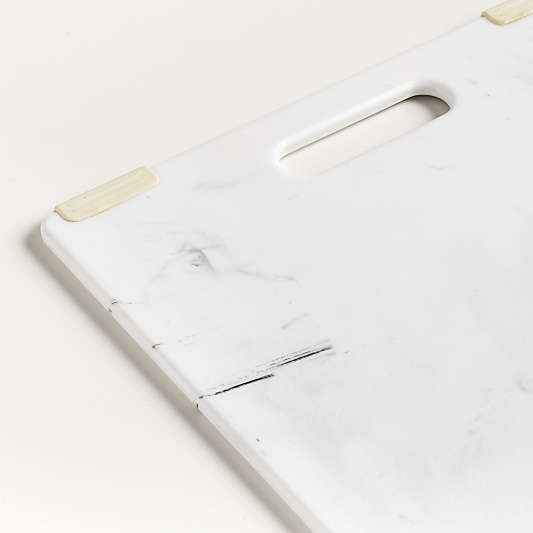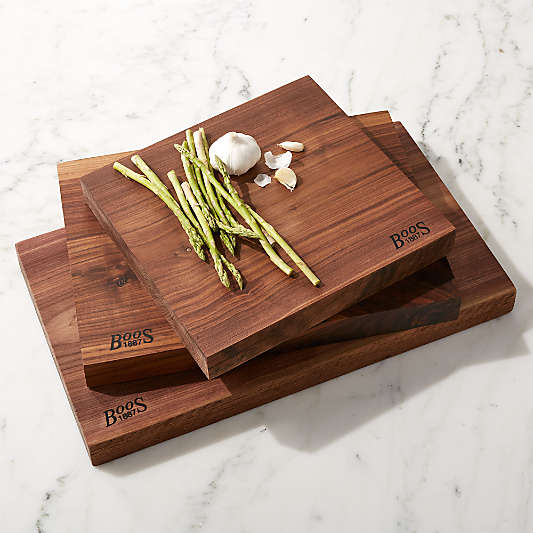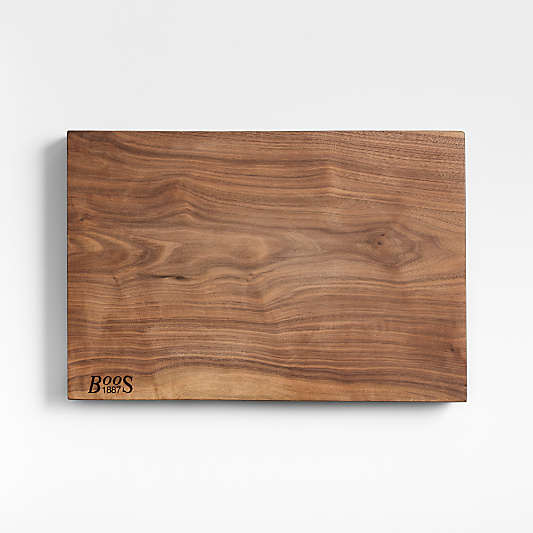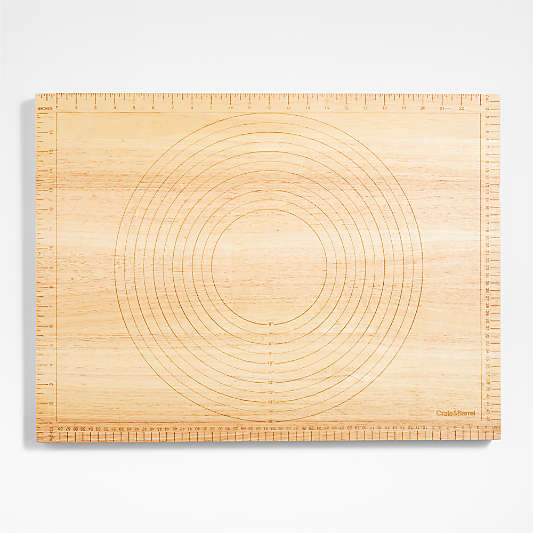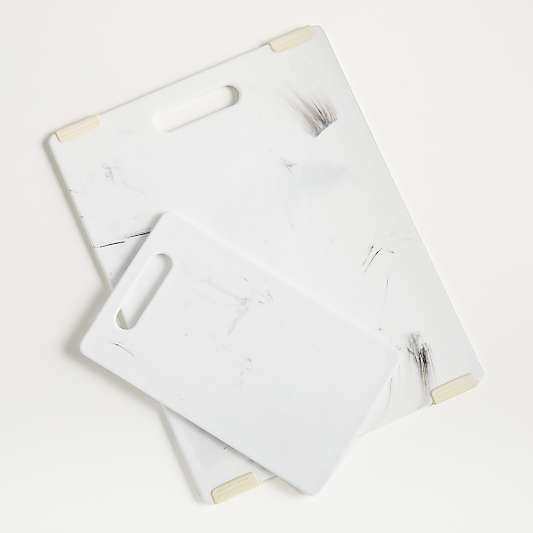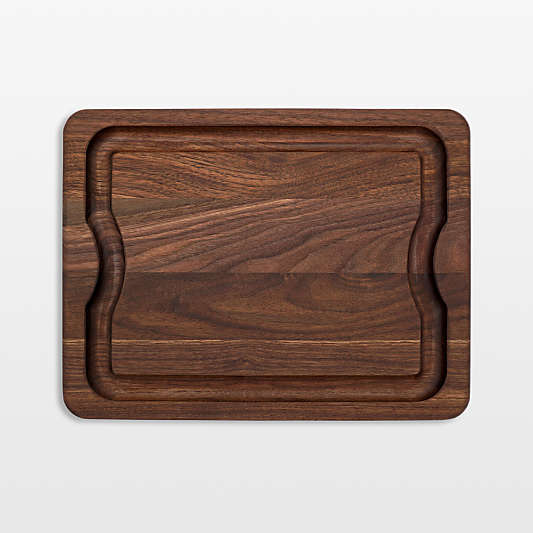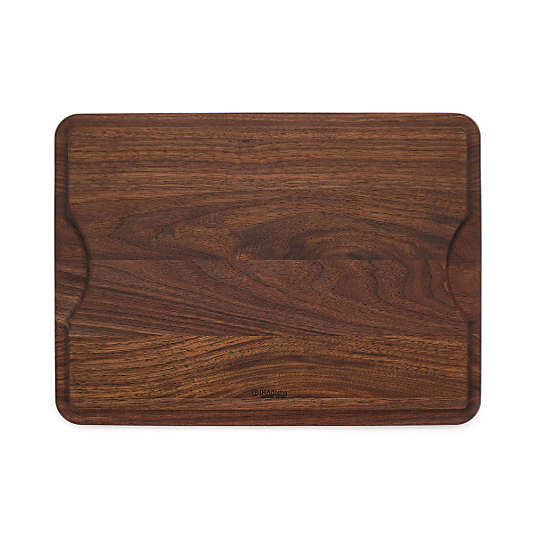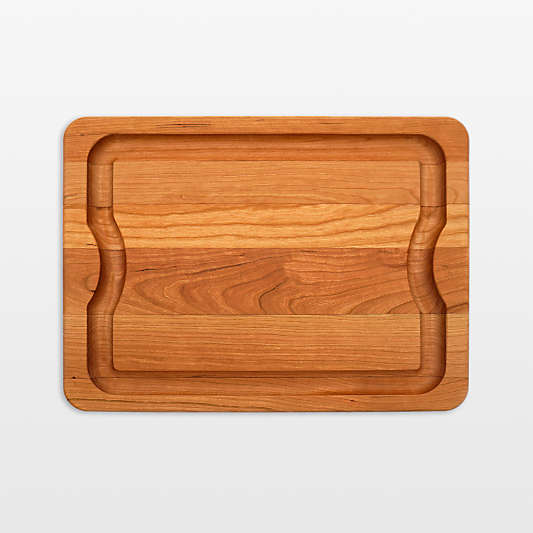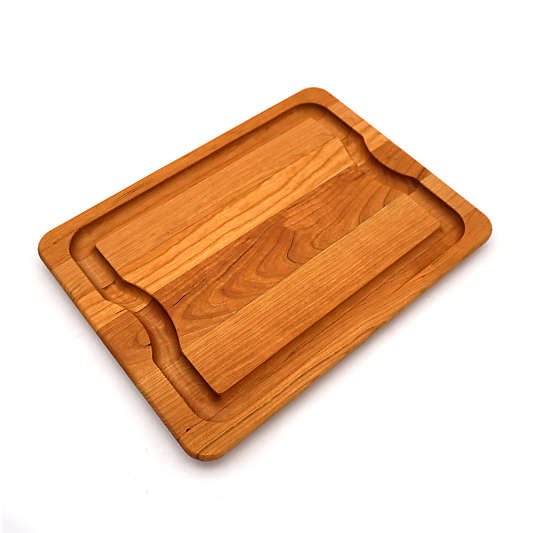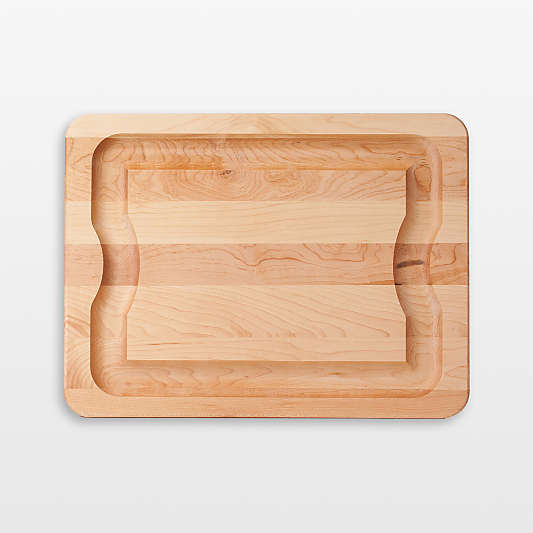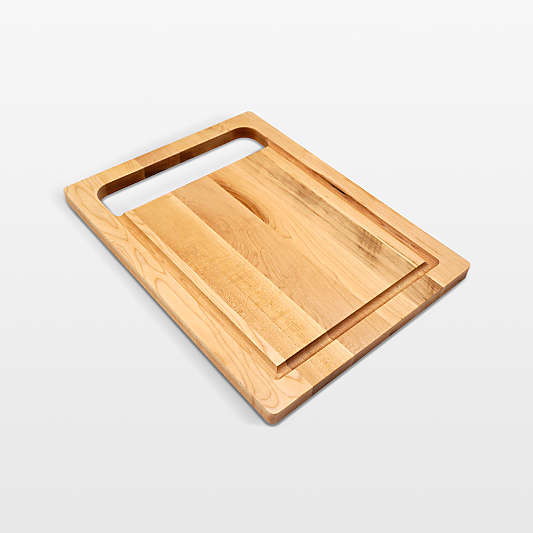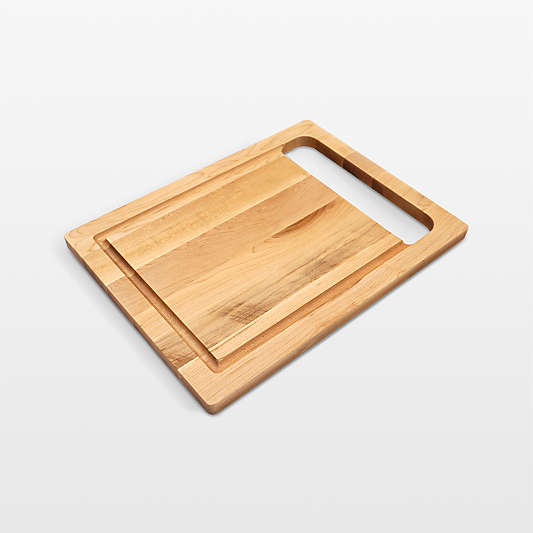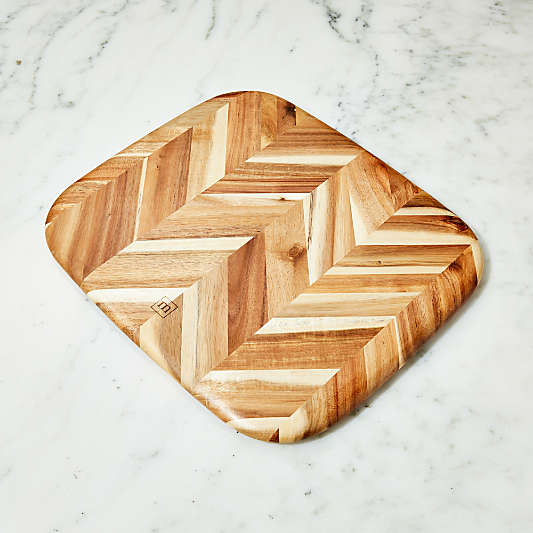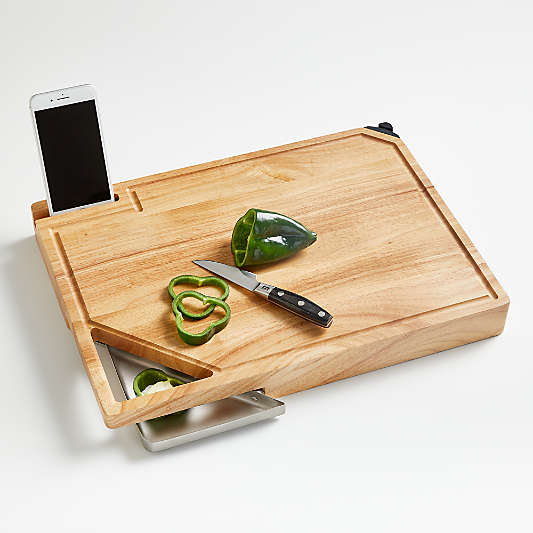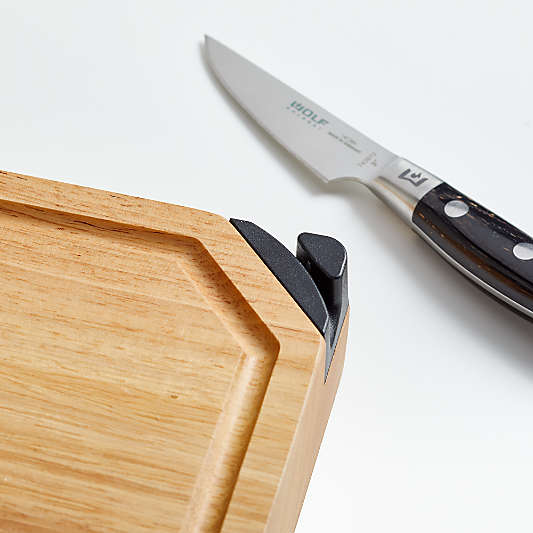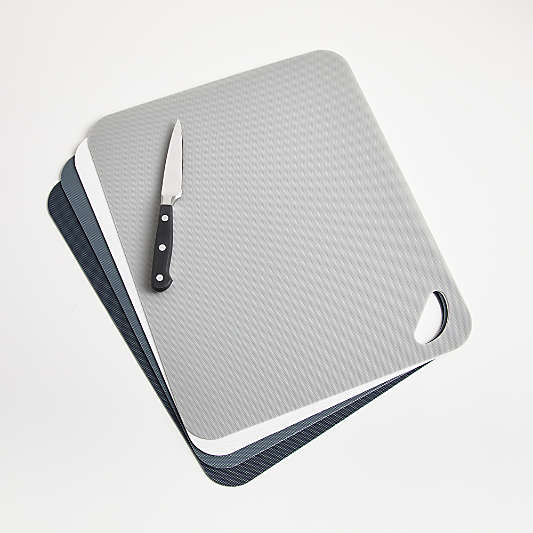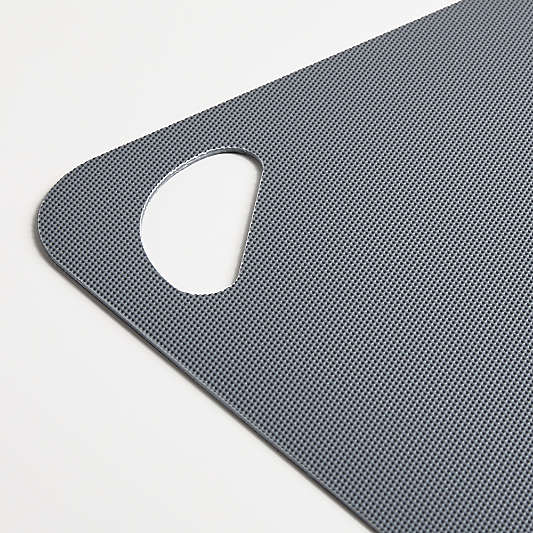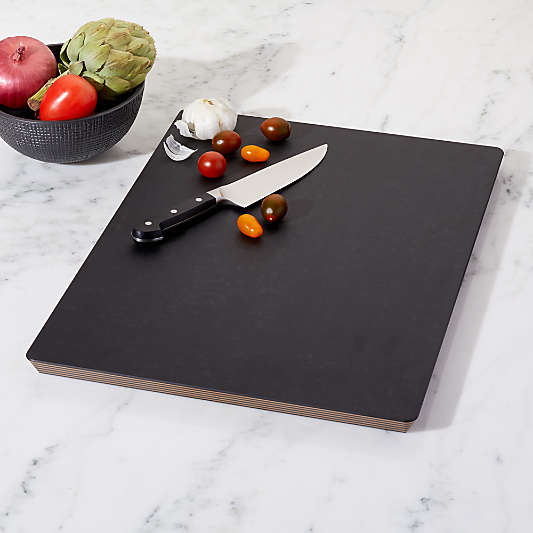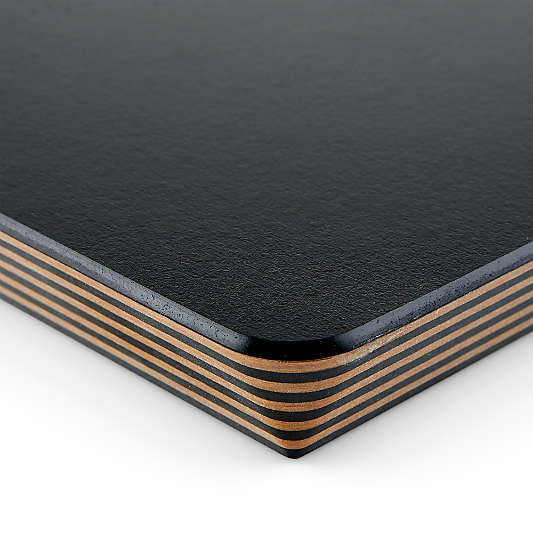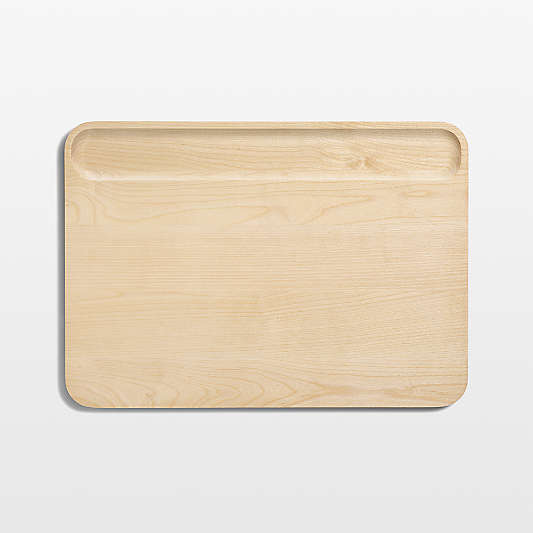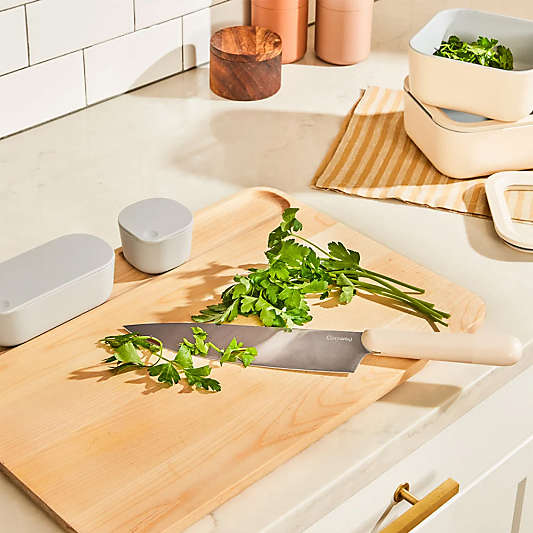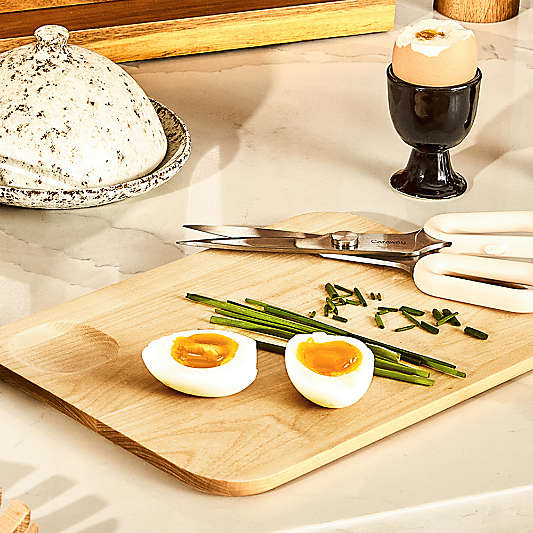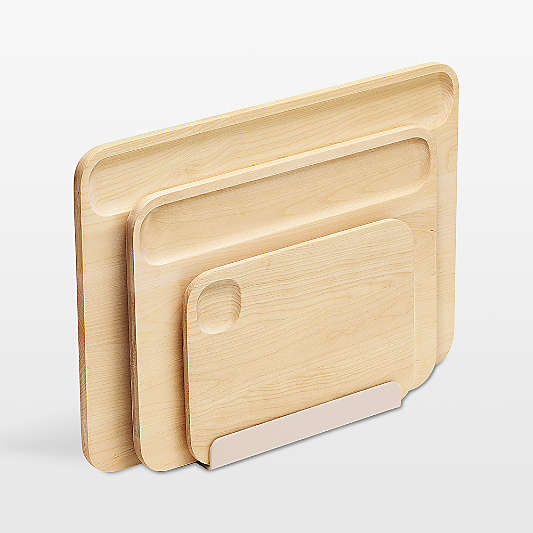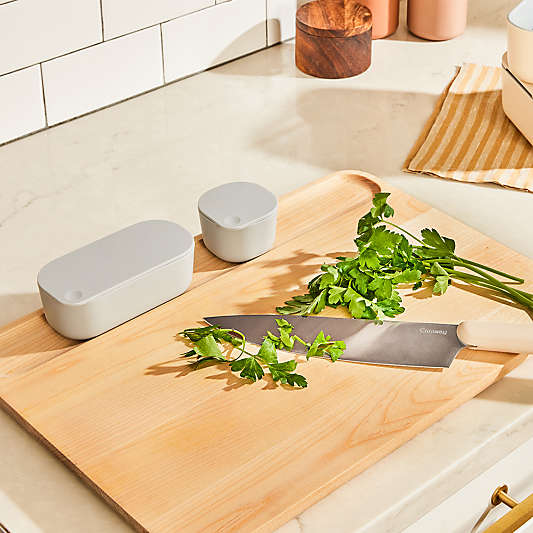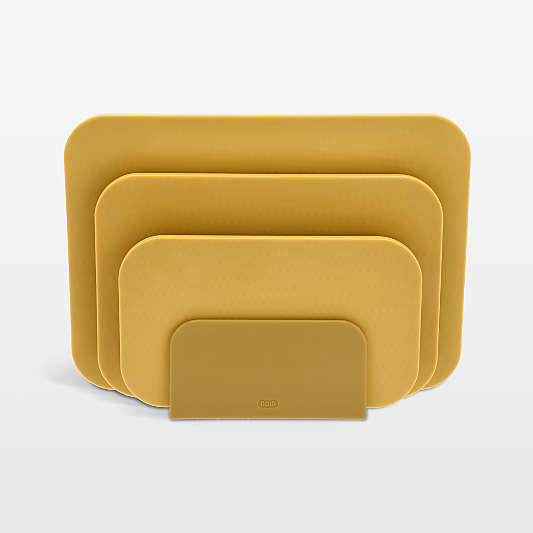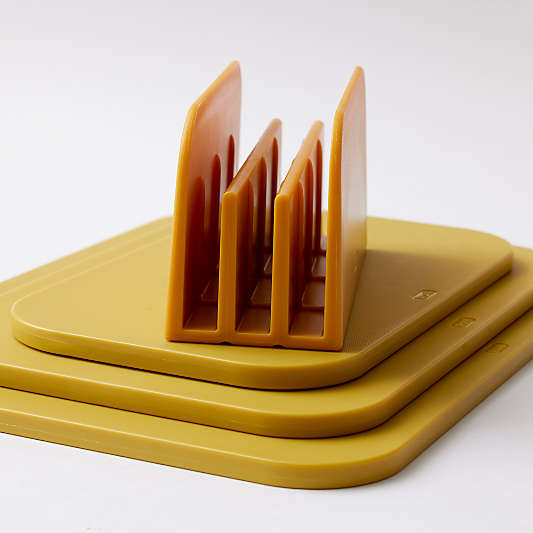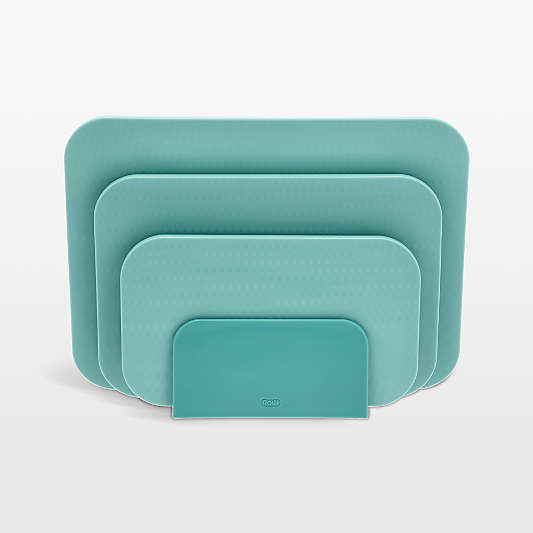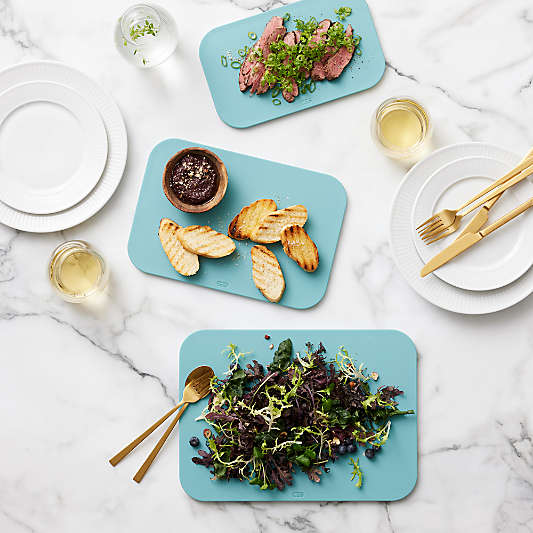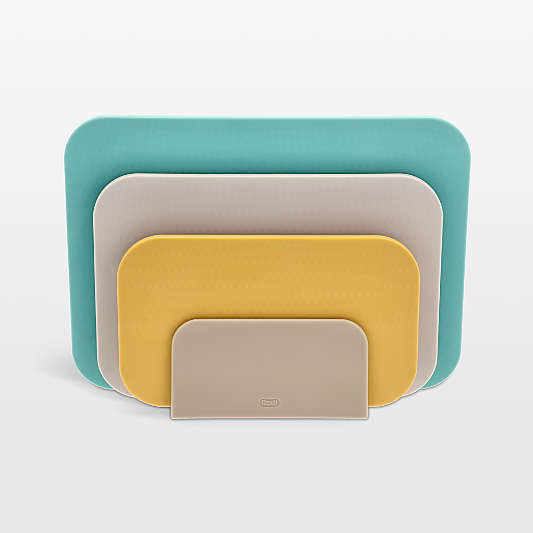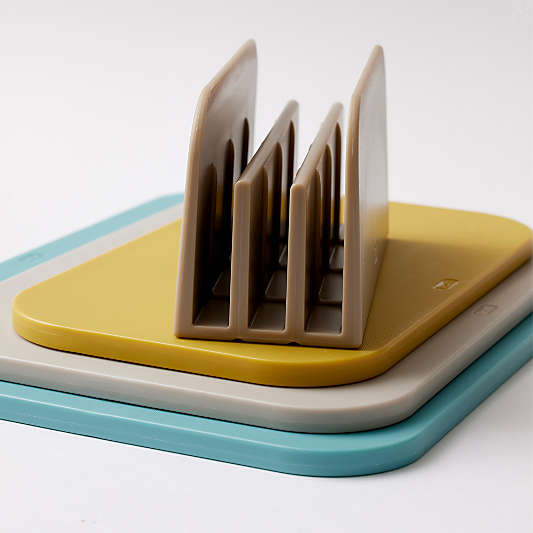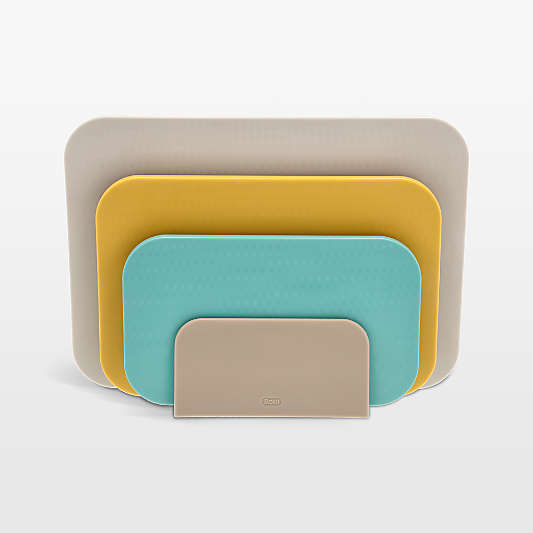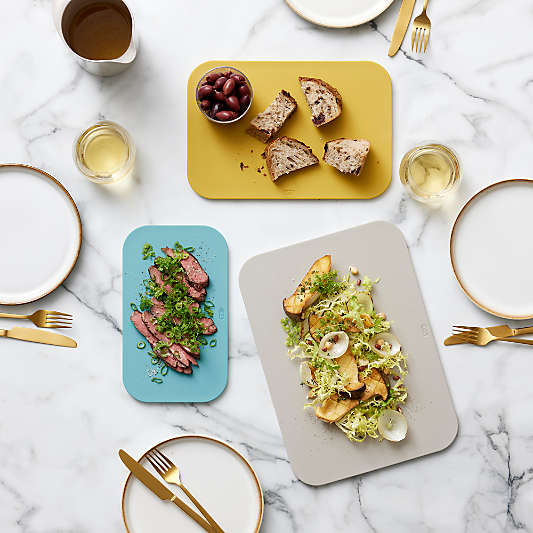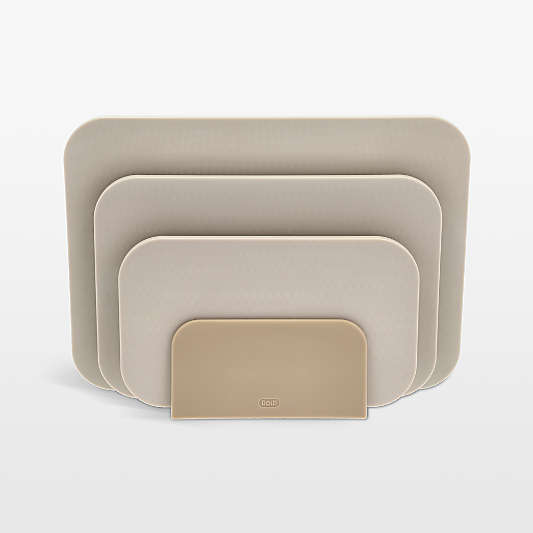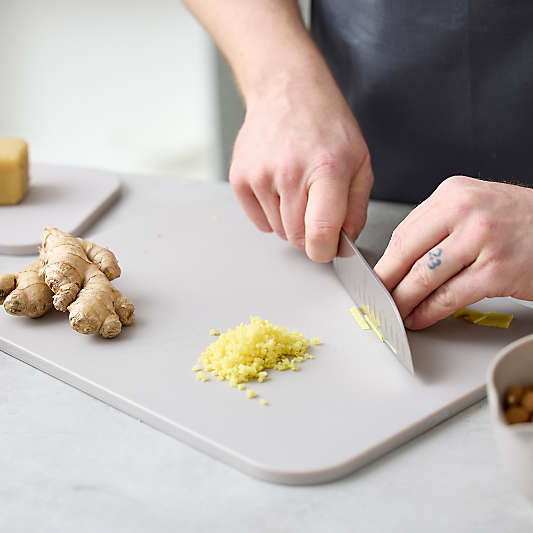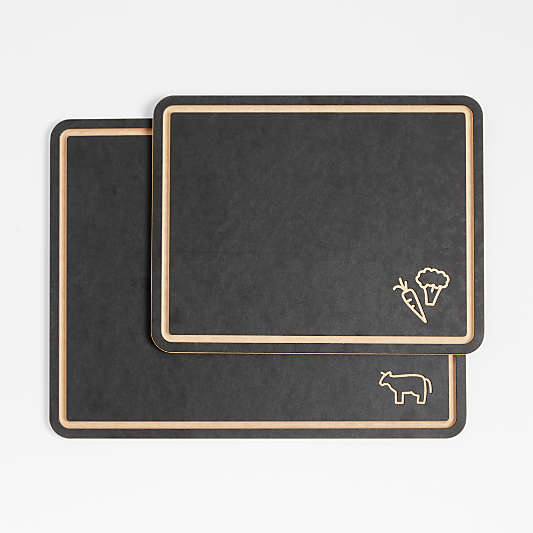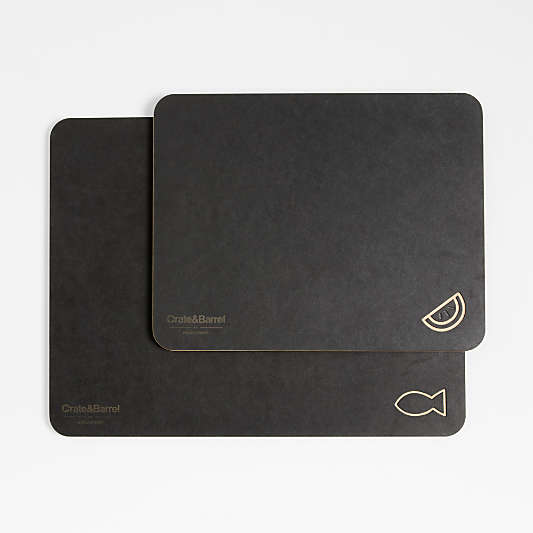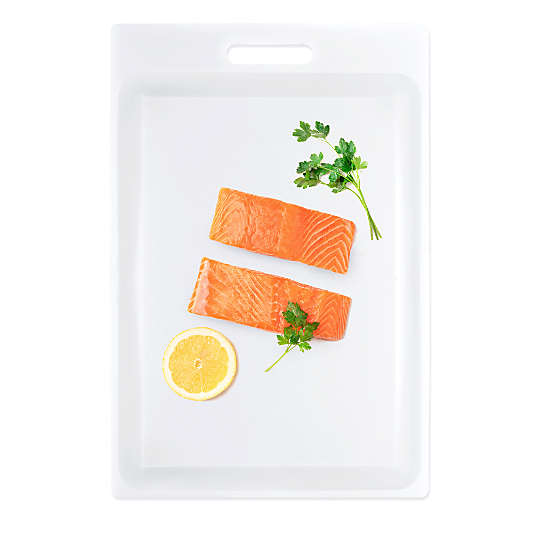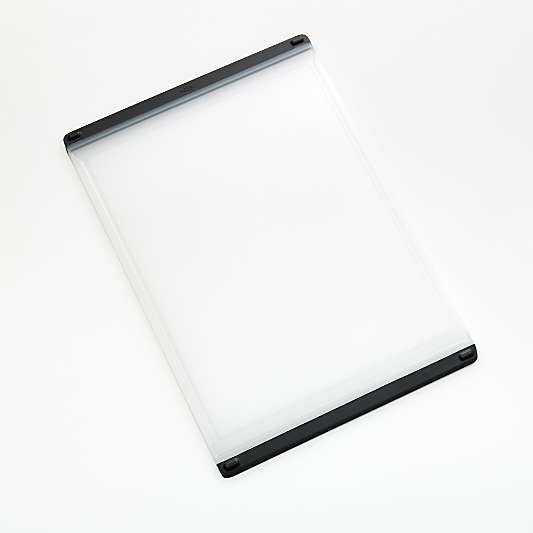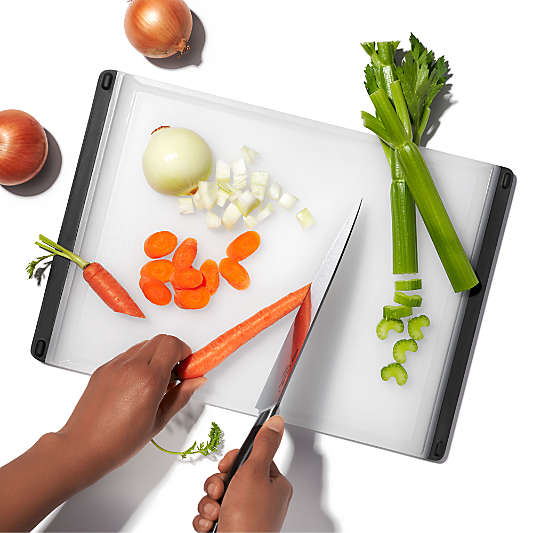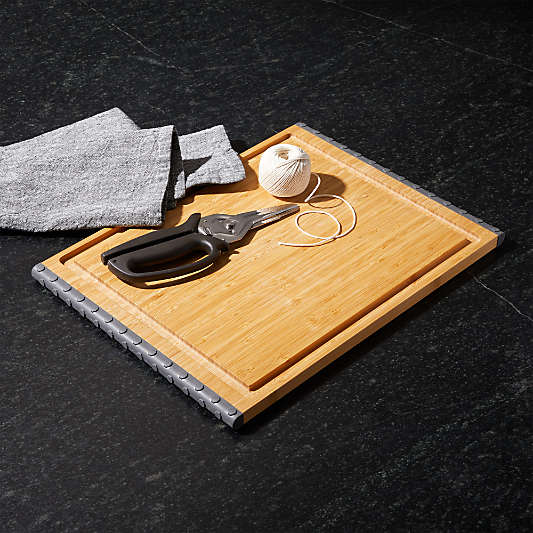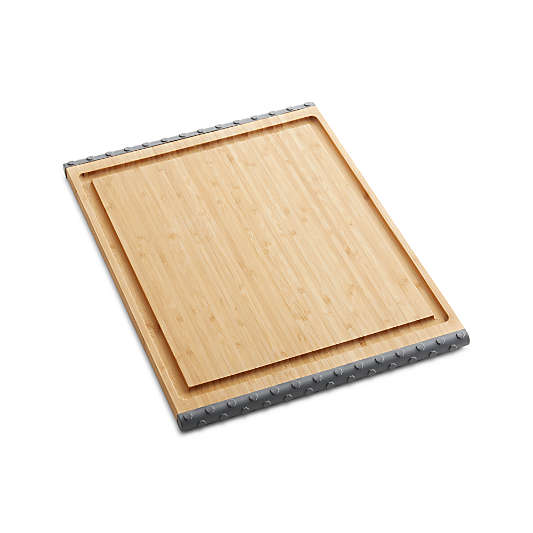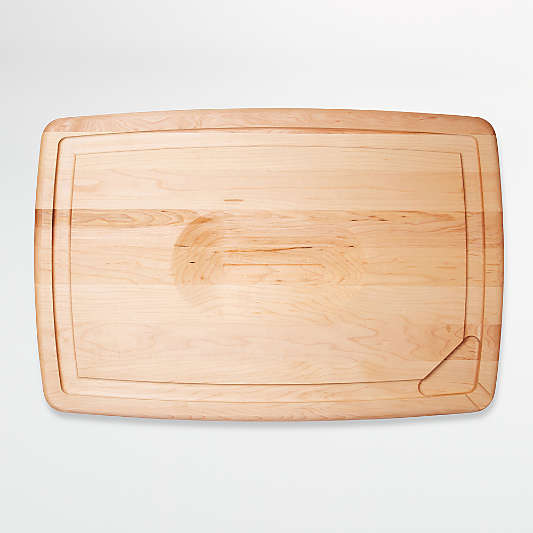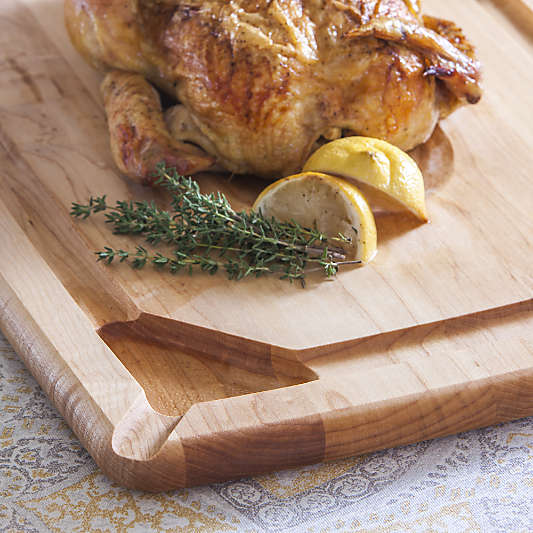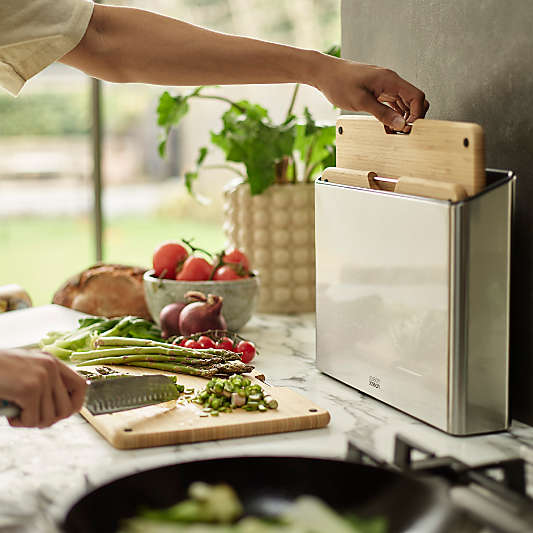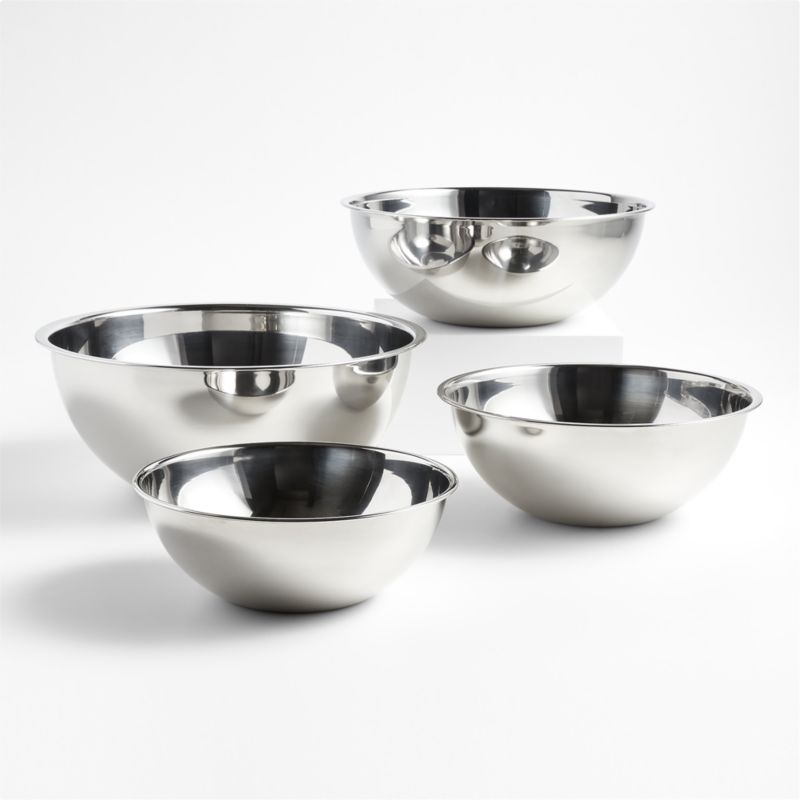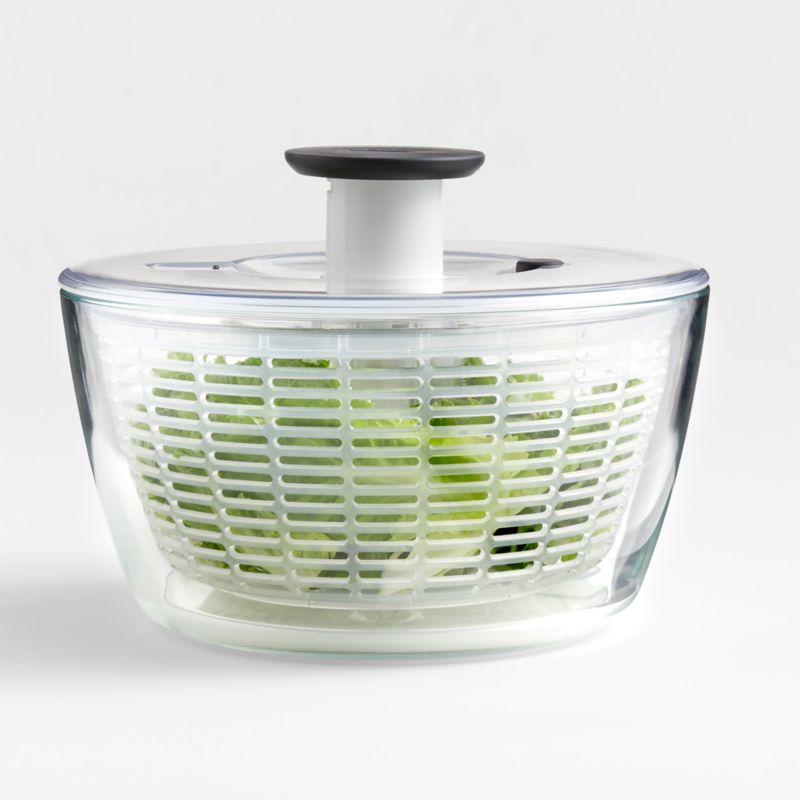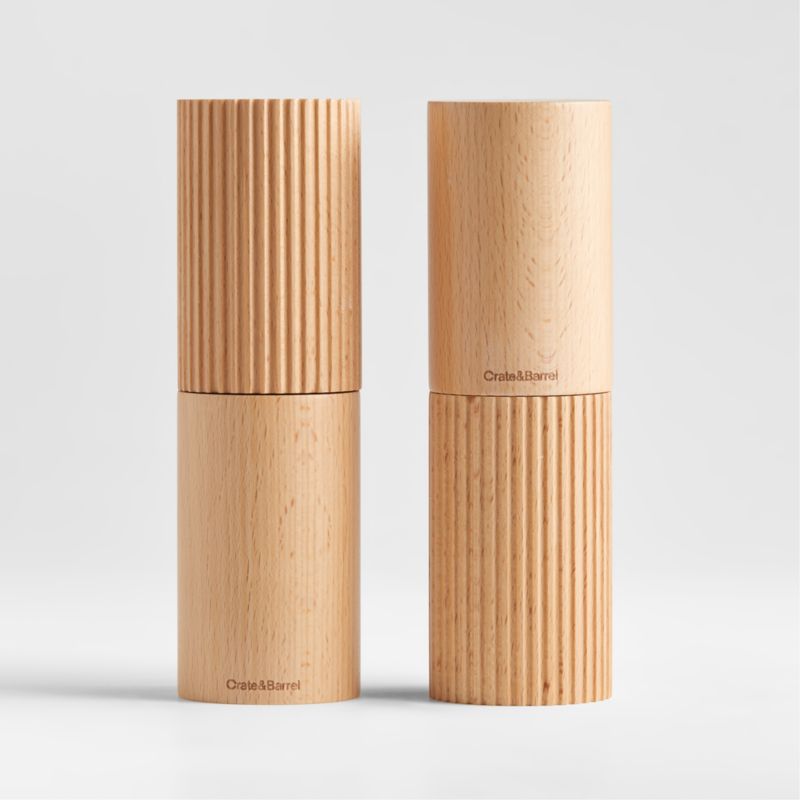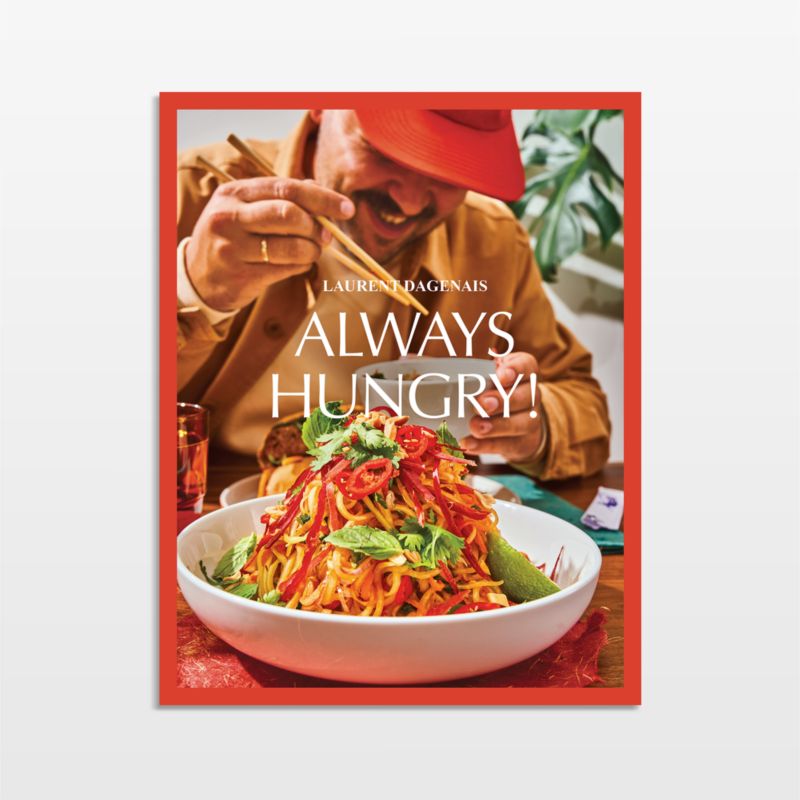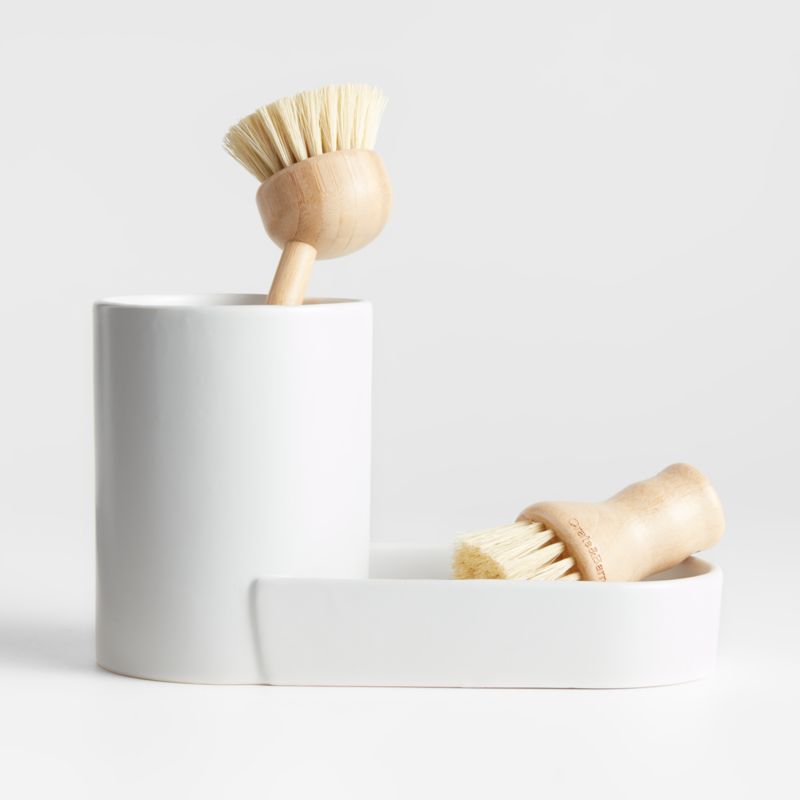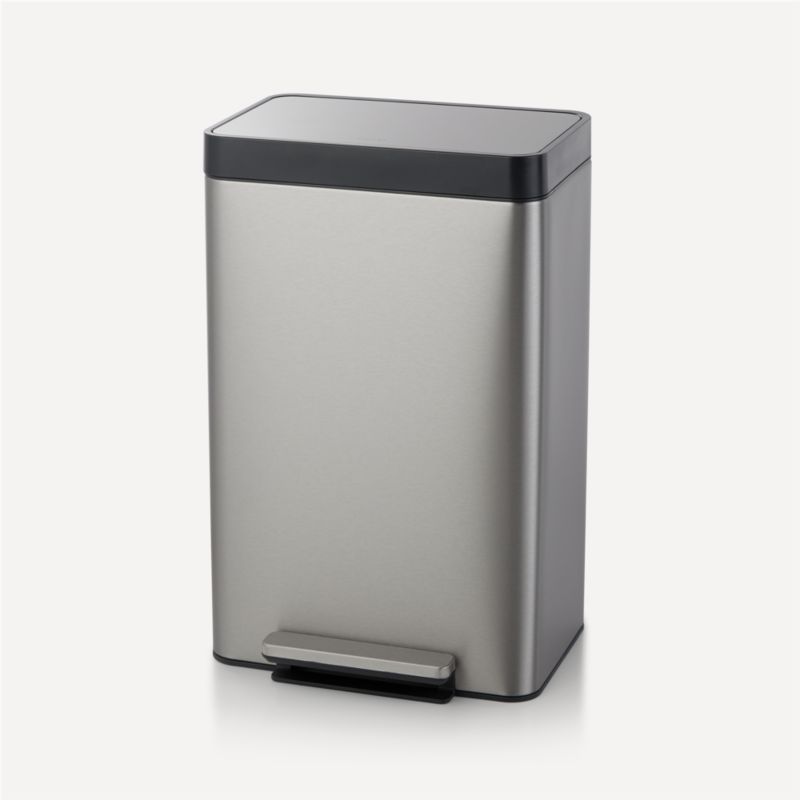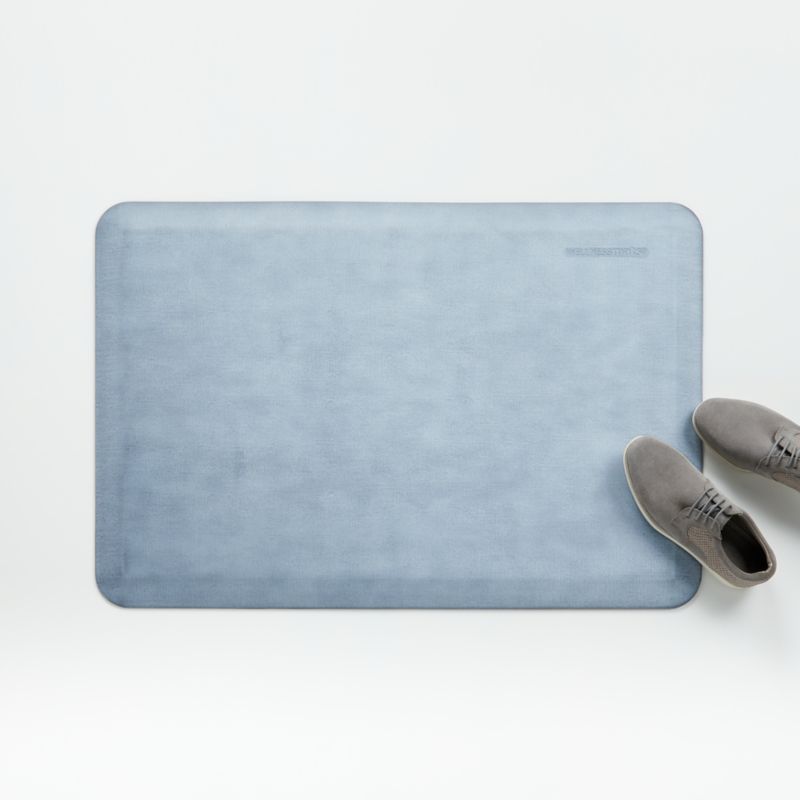Cutting Boards
explore more top picks
Cutting Boards: Wood, Plastic and Composite
Prepare recipe ingredients, serve cheeses, cut grilled meats and more on cutting boards from Crate & Barrel. Find round, rectangular and square chopping boards made out of wood, plastic and blended materials perfect for nearly any essential kitchen task. Cutting boards protect countertops and keep knife edges sharp. Read on to learn more about the varying characteristics, benefits and uses of different types of cutting boards.
Types of Cutting Boards
- End Grain Cutting Board: End grain cutting boards feature the end pieces of wood rails glued together to form a traditional square pattern. End grain wood fibers absorb the impact of the blade, allowing your knife to stay sharp and your cutting board surface to stay smoother.
- Edge Grain Cutting Board: Crafted from full-length wood rails that span the entire length of the board, edge grain cutting boards feature a uniform thickness and true flat cutting surface.
- Plastic Cutting Board: Made of polypropylene, plastic cutting boards are inexpensive and typically dishwasher-safe.
- Paper Composite Cutting Board: Crafted from a blend of wood fibers that are layered and pressed with a food-safe resin, paper composite cutting boards are knife-friendly and dishwasher-safe. Be sure to explore Epicurean cutting boards for eco-friendly chopping boards that are as elegant as they are practical.
- Bamboo Cutting Board: Sustainable and practical, bamboo chopping blocks are light yet dense, meaning that they absorb little moisture and resist swelling and warping.
- Wood Cutting Board: Perfect as both a cutting surface and serving piece, wood cutting boards are available in oak, walnut, cherrywood, ash and teak. Looking for a cutting board that can handle your sharpest carving knives? A thick wood chopping block made of maple, such as a Boos block, is ideal for slicing meats and chopping vegetables.
- Cutting Board with Well: Available in wood and plastic, cutting boards with juice wells feature grooved sides that catch run-off liquid.
- Over-the-Sink Cutting Board: These plastic cutting boards fit over most sinks and feature a removable, collapsible colander.
- Non-Slip Cutting Board: Non-slip chopping boards feature gripping feet on the corners to ensure steady chopping.
- Flexible Cutting Board: These boards are great for chopping and funneling ingredients into bowls and pans.
Frequently Asked Questions About Cutting Boards
Plastic vs. wood cutting boards: which is better?
The plastic versus wood cutting board debate comes down to a matter of preference. While wood cutting boards are more aesthetically pleasing and gentler on knives, minimizing the amount of sharpening required, they do require more maintenance such as hand-washing and regular oiling. Plastic boards, on the other hand, are easy to clean and inexpensive, but their susceptibility to scratches means that they have to be replaced more frequently than wood boards.
How do you clean a wooden cutting board?
If you're wondering how to clean a wooden cutting board, the answer is simple: just use a soapy sponge and warm water. Avoid putting wood chopping blocks in the dishwasher, as the heat and prolonged exposure to water can cause them to warp. After using the board to prepare meat, also consider disinfecting it with a solution of white vinegar or diluted bleach to prevent cross-contamination.
How do you clean a bamboo cutting board?
While bamboo cutting boards and wooden ones look nearly identical, their cleaning process actually varies slightly. While you can still use dish soap on bamboo, this material is more prone to abrasions than wood is, so use a microfiber cloth instead of a sponge to remove food particles. You will also need to wash the cutting board quickly in warm or cool water, rather than hot, to avoid damage such as cracking or warping. Once you are done washing your bamboo board, pat dry with a dish towel.
How do you oil a cutting board?
Keep your wooden cutting boards from warping or cracking by oiling them on a regular basis. Not sure how to oil a cutting board? Start by cleaning and thoroughly drying your board. Then, using either food-grade mineral oil or a specialty cutting board oil, apply a thin, even coat to the entire surface. Allow the wood to absorb the oil for at least a few hours and finish by removing any excess with a clean dish towel.
Wondering what the unwritten rules of gift giving are for weddings and various wedding-related events? Crate & Barrel has you covered (in writing) with our Wedding Gift Etiquette Rules Guide and Bridal Shower Gift Etiquette Rules Guide. Learn how much to spend on wedding gifts, what type of wedding gifts to give, how far in advance to buy wedding gifts and all sorts of useful information when shopping for nuptials.




